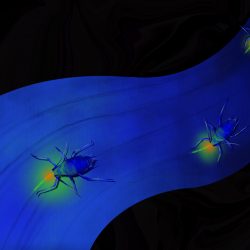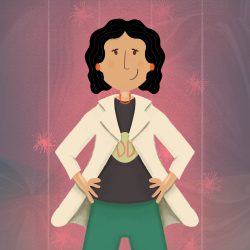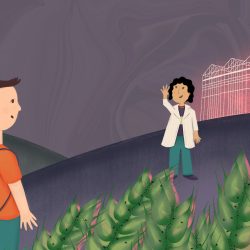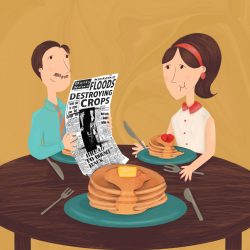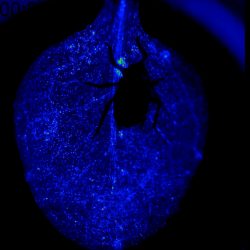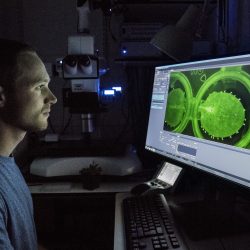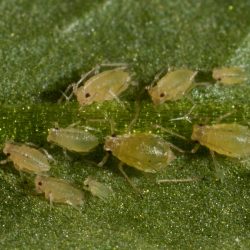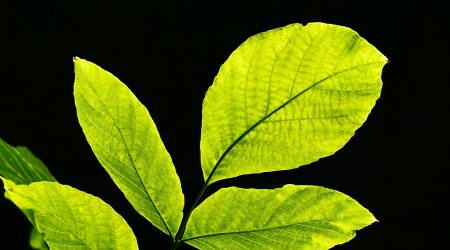Illustrated children’s book ‘Aphid Attack!’ promotes plant health
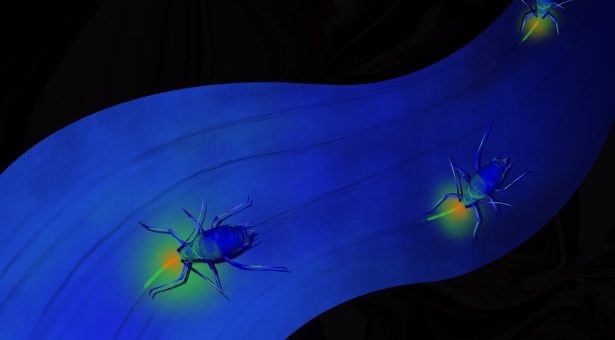
Last year, our collaboration with the Norwich University of the Arts (NUA) illustration course, like many things, was affected by the Covid-pandemic and finished early.
However, a collaboration between one of our PhD students, Josh Joyce, and an illustration student, Lauren Harris continued independently beyond this formal finish and led to an engaging children’s book highlighting the importance of plant health.
The illustrative book tells the story of Billy and his encounter with a plant scientist working to prevent wheat being attacked by aphids.
As part of the International Year of Plant Health, the formal collaboration focused on topics within our Plant Health research programme.
PhD student Josh was one of our researchers who got involved with the project. In February 2020 Josh spoke to second year illustration students about his research. Josh works on investigating how plants respond to insect attack and he focusses on understanding the signalling mechanisms involved in plant defences against aphids.
Josh was keen to been involved in the collaboration to communicate his research further. As he explains, “Normally, I have a lot of videos in my presentations to try to make them visually engaging and communicate our science to people. But, there’s always a limit when people want to see graphs or data in science. Having the opportunity to explore a different way of communicating our research was exciting.”
Illustration students in the second year of their course at NUA, have a choice of projects to choose from several external partners, including the John Innes Centre.
Lauren Harris was drawn to the Plant Health topic, “I chose this collaborative project because I wanted to try and learn something that I knew so little about. I didn’t know anything about the John Innes Centre, and was intrigued by the challenge of working on something completely new to me”.
Approaching Josh’s research from an illustration perspective, Lauren decided to make a children’s book as she learnt about the science, “through studying illustration, I have found that my practice steers towards picture-book illustration and narrative. I love the notion of education being fun and engaging. I was able to tailor Josh’s research to the ideas I had, as I could see how strongly he feels about his work and how this could be translated into something fun for children.”
“It was difficult to create an effective narrative in the beginning because I didn’t understand the science, but once I’d revisited Josh’s research and asked him questions, he provided me with lots of feedback on my ideas and it was going really well.”
When the lockdown put the brakes on the formal collaboration, Lauren was motivated to continue. “I actually think the lockdown made me work better, as my work became my way to distract myself from everything going on in the world. It gave me some goals each week, like I want to get this page done etc. It was also nice to be able to speak to different people outside the four walls that you’re stuck in.”
Josh was impressed by Lauren’s dedicated work, “I really didn’t know what to expect. The first time I saw Lauren’s work, even before I’d offered feedback, the book was well established with very high-quality illustrations and a great storyline – I was quite taken aback and pleasantly surprised.”
On the last few pages, Billy dreams of being a plant scientist too after hearing Dr Durum on the radio encouraging young people to consider plant science as a career.
“The last page, ‘this is why we need more plant scientists’, impressed me because we always hope to emphasise the importance of plant science and inspire others to explore it. We hadn’t discussed this explicitly but Lauren picked up on it, understood and emphasised it. It was great to see that as an inspiring take-home message in the story”, reflects Josh.
Lauren continues, “I think initially I didn’t see how the project could make an impact , I just thought that sounds fun, I’ll be drawing some plants. But the more I learnt about plant science the more I realised how important it is. I wanted to draw on my own lack of science knowledge to relate young audiences.”
“That’s why I introduced the concept of pancakes, because I thought how is a kid going to understand the importance of plants and why we need them and people like Dr Durum? So I used an approach children would understand and wonder ‘Oh yeah, what if we don’t have pancakes one day’.”
“It changed my view of science. Because I was able to adapt what I was learning to something I was passionate about. This made the process really interesting for me, I’ve learnt a lot and thoroughly enjoyed every aspect of it. If I hadn’t chose this project I don’t think I would have realised that I can enjoy learning about science and translating it into my own way of communicating”, reflects Lauren.
Josh contemplates, “Such a visually engaging product that can be used to help reach younger audiences with our science was not something that I was expecting when I first shared our research with the illustrators. Now we have this beautiful book and I am very grateful for Lauren’s hard work and the enjoyment that came with this this collaboration.”
Alice, a lecturer on the course who facilitated the project says, “In such a difficult year, when we had to end the formal collaboration early, it was amazing to see something like this could still emerge from the project.”
Gill Sampson the Illustration Course Leader concludes, “We’re excited to see how our NUA students are working independently as well as collaborating with our external partners, especially during what has been such a challenging time for all. Lauren’s illustration really stands out in this story based on Joshua’s plant science research. We’re looking forward to all the work being produced again this year in our ongoing collaboration with the John Innes Centre”.
- Take a look at the book; ‘Aphid Attack!’ online here
- Find more of Lauren’s illustration on Instagram @lauren_illustrates
Illustrations
Research images
Josh Joyce’s PhD is funded by the Gatsby Charitable Foundation.

